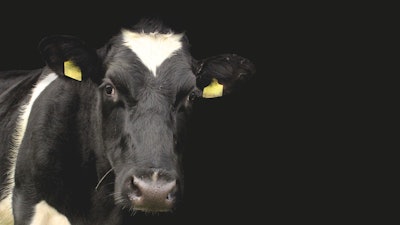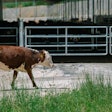
In a groundbreaking study, scientists from the U.S. Department of Agriculture's Agricultural Research Service (ARS) and Iowa State University (ISU) have demonstrated the potential of generative Artificial Intelligence (AI) to expedite the search for solutions to reduce enteric methane emissions from cattle. This innovative approach could significantly impact the animal agriculture sector, which accounts for about 33 percent of U.S. agriculture emissions and 3 percent of total U.S. greenhouse gas emissions.
Key findings from the research include:
The study focuses on identifying compound molecules capable of inhibiting methane production in cows' rumens, similar to the effects of bromoform found in seaweed.
Researchers combined generative AI with large computational models to identify potential methane inhibitors that are safe and scalable.
A graph neural network was developed to predict molecular behavior and identify promising candidates for laboratory testing.
Fifteen molecules were identified with similar enteric methane inhibition potential to bromoform, without its associated toxicity.
The study demonstrates the cost-effectiveness of using AI in this type of research compared to traditional laboratory methods.
ARS Administrator Simon Liu emphasized the importance of this research, stating, "Developing solutions to address methane emissions from animal agriculture is a critical priority. Our scientists continue to use innovative and data-driven strategies to help cattle producers achieve emission reduction goals that will safeguard the environment and promote a more sustainable future for agriculture."
The collaborative effort between ARS and ISU showcases the potential of AI in accelerating scientific discovery and addressing pressing environmental challenges. By leveraging publicly available databases and advanced computational techniques, researchers have created a feedback loop that continuously improves the accuracy of AI predictions.
This study not only presents a promising pathway for reducing greenhouse gas emissions from animal agriculture but also highlights the growing role of AI in agricultural research. As the industry continues to seek sustainable solutions, this innovative approach could pave the way for more efficient and targeted interventions in livestock management and environmental conservation.

















